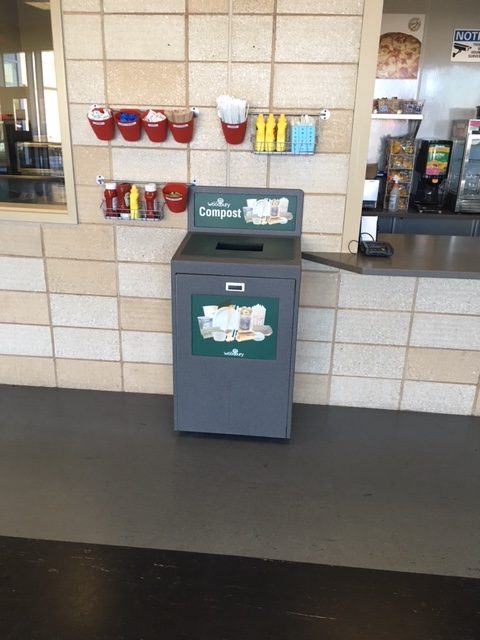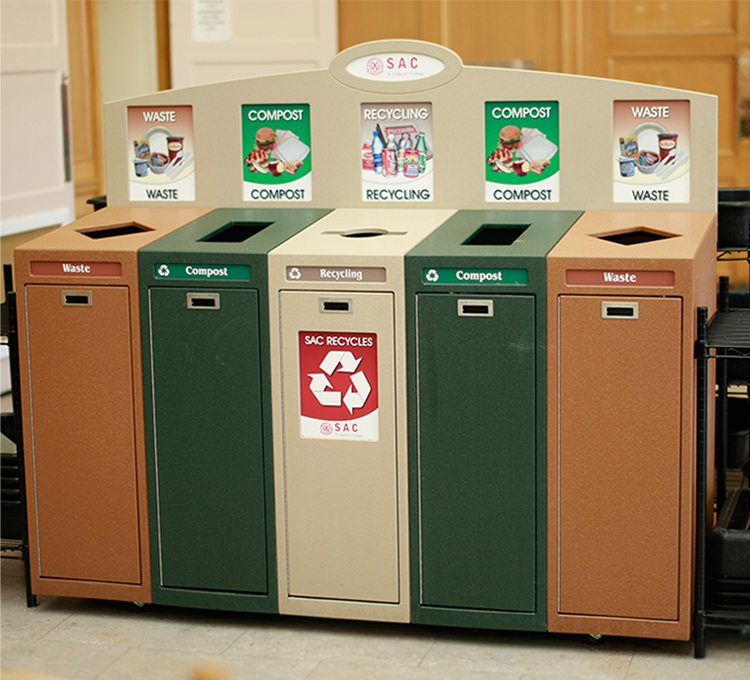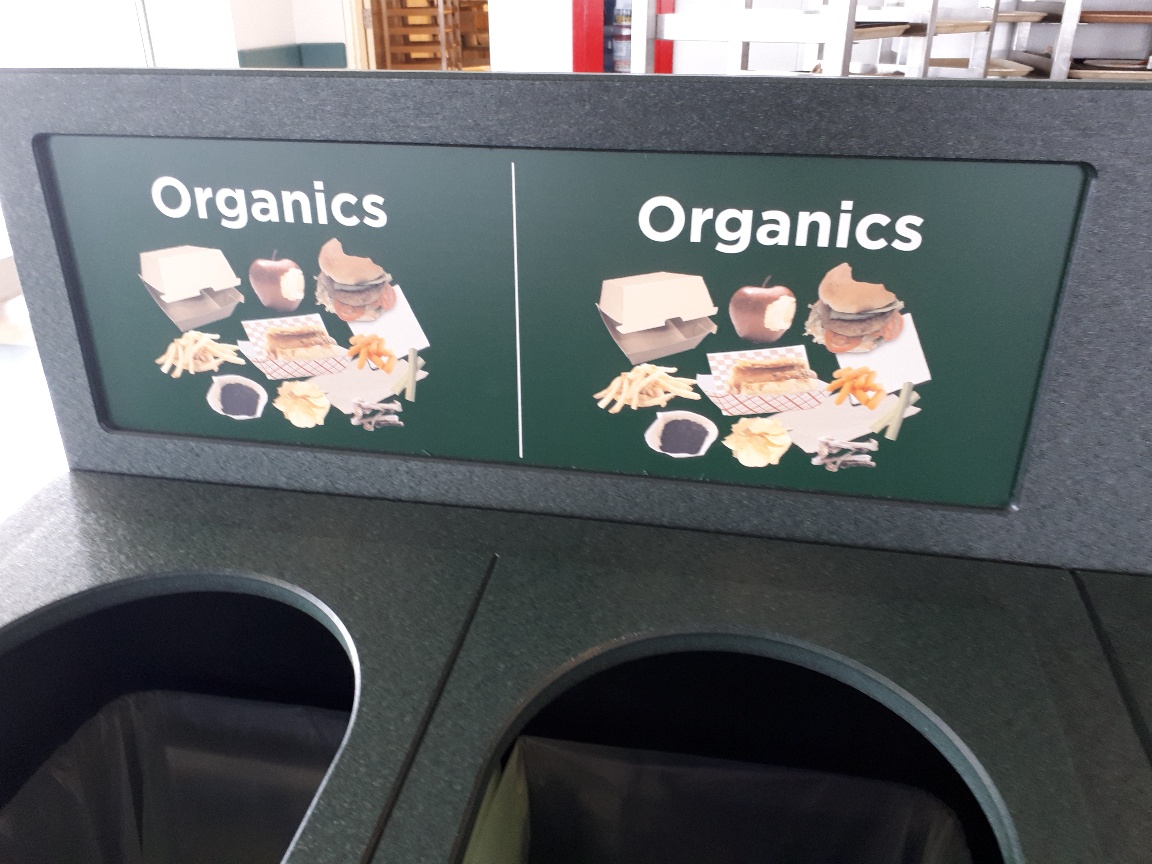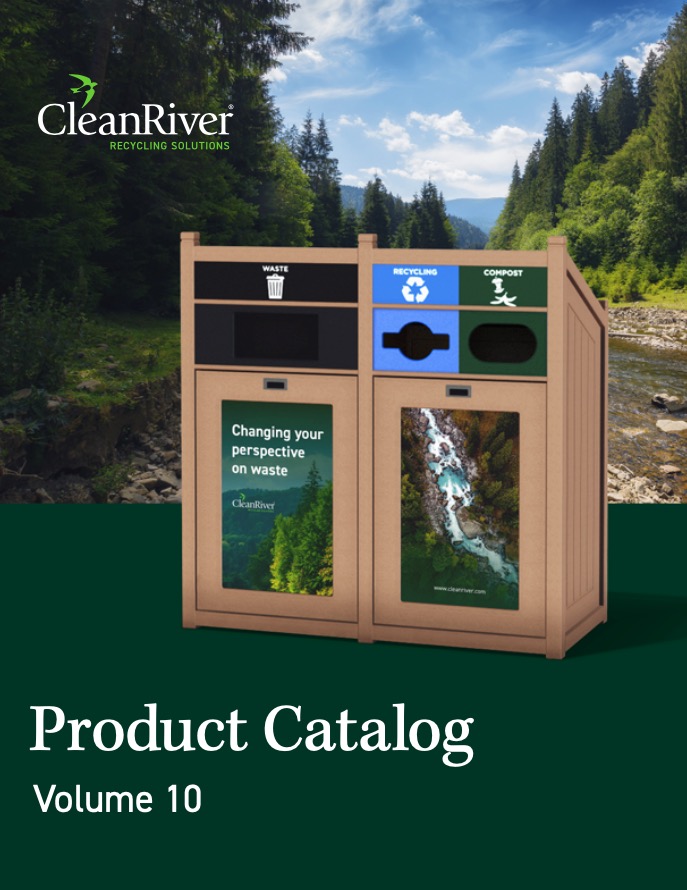Share
If your school or campus has yet to start collecting organics, adding a compost stream to your recycling program is an easy way to increase your waste diversion and be more environmentally friendly. CleanRiver offers a variety of bins and solutions for organics collection and can even retrofit your current waste & recycling bins to include a compost stream to help you save time and money.
Here are some key steps to help get an organic compost program started at your school.

1. Create A Compost Committee
Before starting any initiative, it is always important to get the buy-in from key stakeholders in your organization. When adding organics collection to your current recycling program it is a great idea to recruit different individuals such as teachers, students, parents, custodial staff, kitchen staff, waste hauler(s) and students to help start and sustain your NEW compost program. This team should work together to set goals, create a timeline, monitor the program and provide enthusiasm and new ideas on how to improve and promote it.
2. Conduct Waste Audit
To plan your compost program effectively you need to first determine what percent of your waste is organic and compostable. This information is vital for helping you choose your containers to right size the capacity of what you are collecting. To get this baseline data, have your compost committee conduct a waste audit. A thorough waste audit is critical to help you gain better understanding of how much organics your school is tossing and what areas of the building or campus are collecting the most compostable waste.
To find everything you need to know about how to conduct an effective waste audit check out our eBook: A How-To Guide for Waste Audit Success or our Waste Audit Toolkit.
3. Check With Your Waste Hauler
Once you conduct your waste audit and determine the amount of compostable waste your school or campus is producing it is time to check with your waste hauler and make sure that they have the proper equipment to accommodate your newly added compost stream.
Another great alternative to consider is purchasing your own digester for your campus. CleanRiver has partnered with many schools who have taken this route and are able compost their organics right on their own grounds.

If you decide to purchase equipment to do it on site, then it is important to reach out and partner with any local businesses such as farmers or nurseries who would be willing to take your composted material. Don’t forget that organic waste is a valuable resource that can be composted to produce soil fertilizers to enhance soil quality and reduce soil erosion.
4. Make Sure You Have Sustainable Suppliers
Work with your kitchen and cafeteria staff to identify any products or items that are currently being purchased and see if there is a compostable alternative. A lot of schools have third parties running the cafeterias, so you need to get them on board with suppliers, process and products. What products can you switch to biodegradable or organic and can your waste hauler or equipment handle those products and properly break them down?

By starting at the supply chain, you can control what is coming into your school and thus have more control over what is being diverted from landfill. Using compostable plates and cutlery in cafeterias and meeting rooms makes it easy for people to dispose of their waste correctly because it removes the need to sort. They can simply toss the plate and food scraps into the one organics collection bin. Compostable cutlery, plates and take-out boxes made from plant fibres or compostable plastic are now more readily available and competitively priced than ever before.
5. Buy Your Compost Bins

The results from your waste audit will help you determine how many compost bins you will need and the size/capacity of your new compost stations. You will have a better understanding of traffic flow and which areas you will need place your bins.
Here are our top tips when ordering your compost bins:
- Determine the opening shape and size
- These may differ depending on location. In the cafeteria for example you may be collecting compostable plates, cutlery and clamshells so the openings need to be large enough to accommodate these.
- Decide on whether you need a lid
- Most people are concerned that organic waste is going to smell. This isn’t the case if the bin is emptied frequently but it’s a good idea to have a closure on the stream to keep out flies and other pests.
- Get the size right
- Understand the makeup of your compost and ensure its not too heavy for custodial staff. Make sure the bin is right sized based on your waste audit and union capabilities.
- Keep your streams together
- As a best practice we recommend consolidation of all your bins/ streams. Ensure your newly added organics stream is connected and right next to the waste and recycling bins.

- Use clear graphics that tell people what’s organic
- Staff and students may not know that tea bags and paper towel or napkins are compostable. Identify key compostable products on your recycling labels to guide staff and students. If you are using compostable plates and cutlery show an image of this on the container graphics so people know it’s compostable and not recyclable. You don’t want to contaminate your recycling stream!
- Matching the color of the opening plates with the graphics also helps people make the right choice.

6. Educate & Communicate
Engage students and faculty with the new organic’s addition to your recycling program. Education is crucial, and it is critical to get teachers and parents involved especially in elementary and secondary schools to help introduce students to the program. It’s always a good idea to start the program at the beginning of the school year to set clear expectations and start new habits.

Promote the new organics compost program with:
- Staff meetings
- Assemblies
- Posters
- Student Fairs
- Newsletters
- Student Handbook
- Table tent cards (in cafeterias)
- Student radio
- Announcements
- Letters home to parents *encourage parents to send litter less lunches*
For more great ideas and resources check out our blog How To Motivate Elementary, High School, and University Students To Recycle
Bonus tips
- Talk to the grounds keeper about keeping lawn clippings and see if you can get those included in your organics collection and save more waste hauling fees.
- Make sure there are no restraints in your janitorial staff contracts to removing or sorting compost. They may not be obligated to sort if students leave anything on desks or cafeteria tables.
- Look into possible food donation or breakfast programs for any excess food from the kitchen, and work with the food service team and developing new systems for reusing food scrap and waste.
- Promote composting pizza boxes and if they are filling up your trash consider a pizza box collection bin.

For more information about school recycling and organic composting programs, check out our blogs 3 Tips To Avoid Competing School Recycling Programs and 5 Step Checklist To Start A Successful School Recycling Program.
CleanRiver Recycling provides a variety of innovative, flexible and customizable recycling solutions. To determine the right solution to meet your needs, use the CleanRiver product selector.
If you have additional questions that weren’t answered in this blog post please call us at 1-888-646-4246 or email solutions@cleanriver.com.



